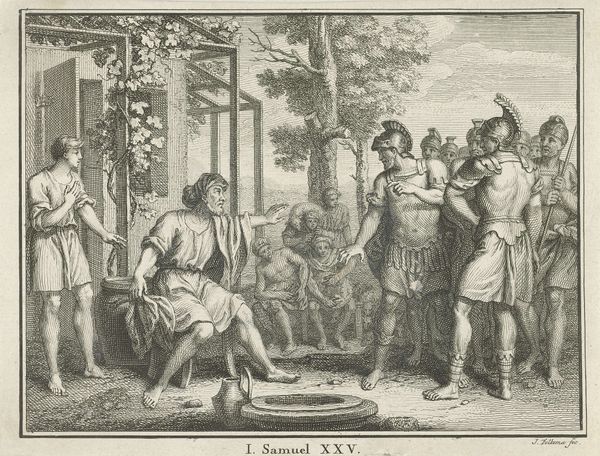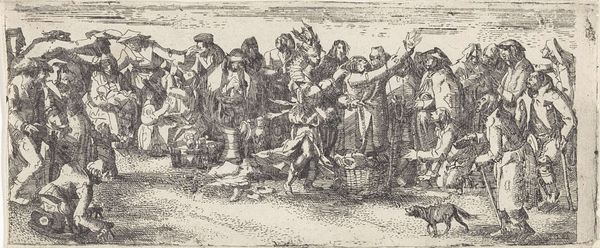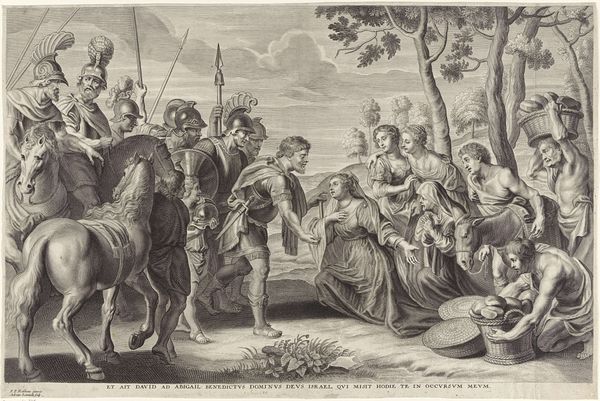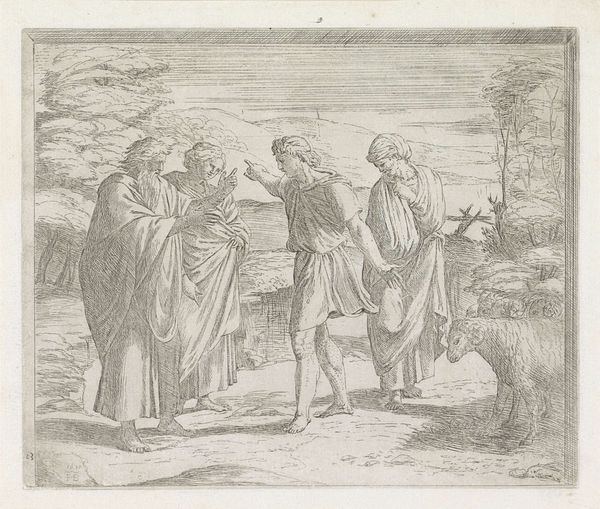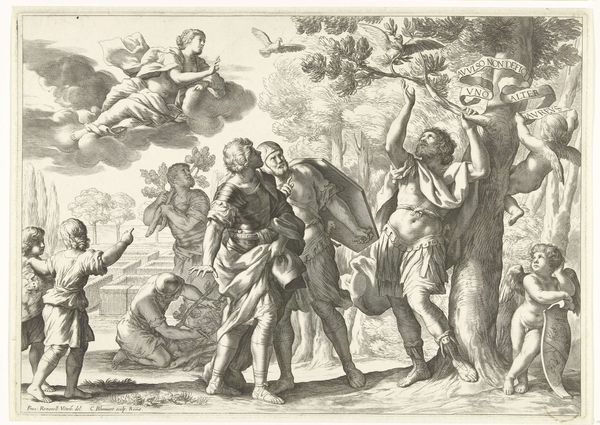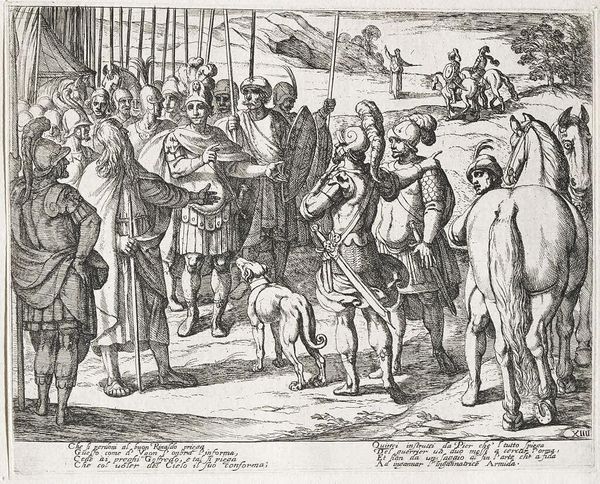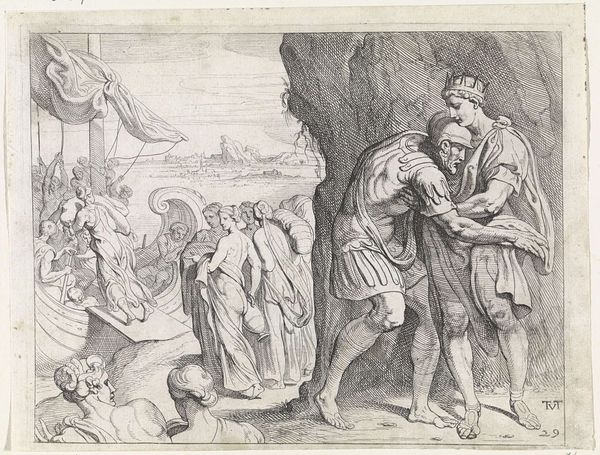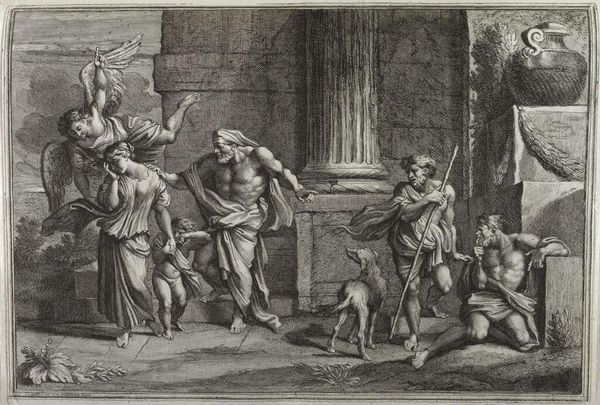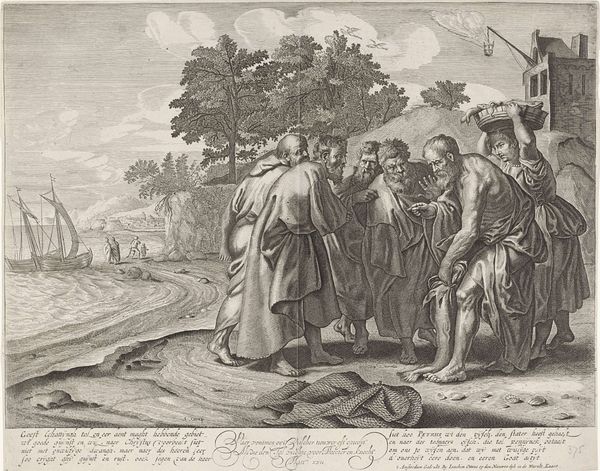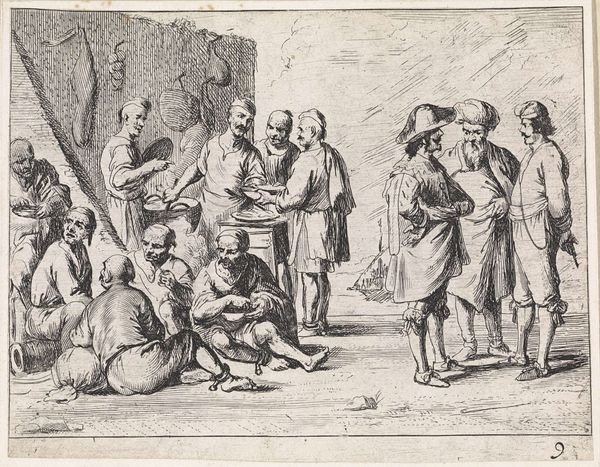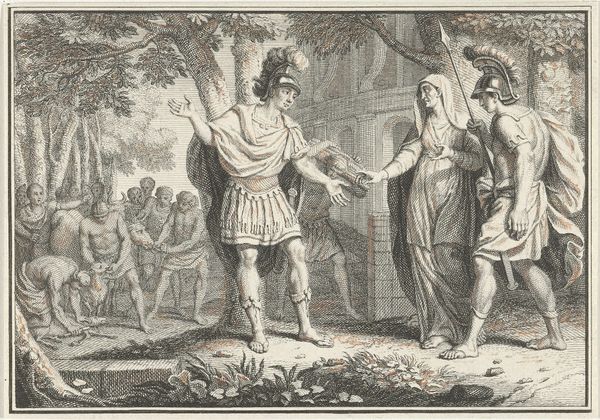
print, engraving
#
allegory
#
baroque
# print
#
landscape
#
figuration
#
cityscape
#
history-painting
#
engraving
Dimensions: height 280 mm, width 381 mm
Copyright: Rijks Museum: Open Domain
Editor: So this is Reinier van Persijn’s "Allegorie op het geslacht Barberini", dating from 1623 to 1668. It's a print, currently held at the Rijksmuseum. It has quite a formal, staged feeling to it, almost like a political rally, but with figures floating on clouds. What strikes you about this work? Curator: What I find immediately compelling is the depiction of power and its performance in a very specific historical moment. This isn't just a family portrait; it’s a carefully constructed narrative intended to solidify the Barberini’s position. Consider the allegorical figures, the Latin inscriptions...they're all tools used to craft and control a particular image. Do you notice any potential tensions or contradictions within this seemingly harmonious image of power? Editor: I do. Those figures to the left, the ones gesturing toward the inscription – their clothes look more “oriental,” less Roman. Why would they be included here? Curator: Precisely! Those figures represent the “spoils” of the Barberini’s influence and papal power. The "Orient" becomes a symbol of their reach, of the places and people they exert control over. But consider this further: How does representing the “other” in this way reinforce a sense of European superiority, and what implications does that have for understanding this family's legacy in a broader, more critical context? Editor: It definitely makes you think about the cost of power and who is included or excluded in the narrative. Are the angels also used in the same context? Curator: Absolutely! The angels above reinforce a divine right, connecting the family to a celestial, unquestionable authority. But let's also consider who this print was made *for*. How did it circulate? What kind of power dynamics did it create or solidify amongst its viewers? Editor: It's more than just a portrait; it is very layered, with lots of encoded historical and cultural details about the Barberini. Thanks. Curator: Indeed. And by interrogating those layers, we can uncover the complex interplay of power, representation, and ideology that continues to shape our world.
Comments
No comments
Be the first to comment and join the conversation on the ultimate creative platform.
